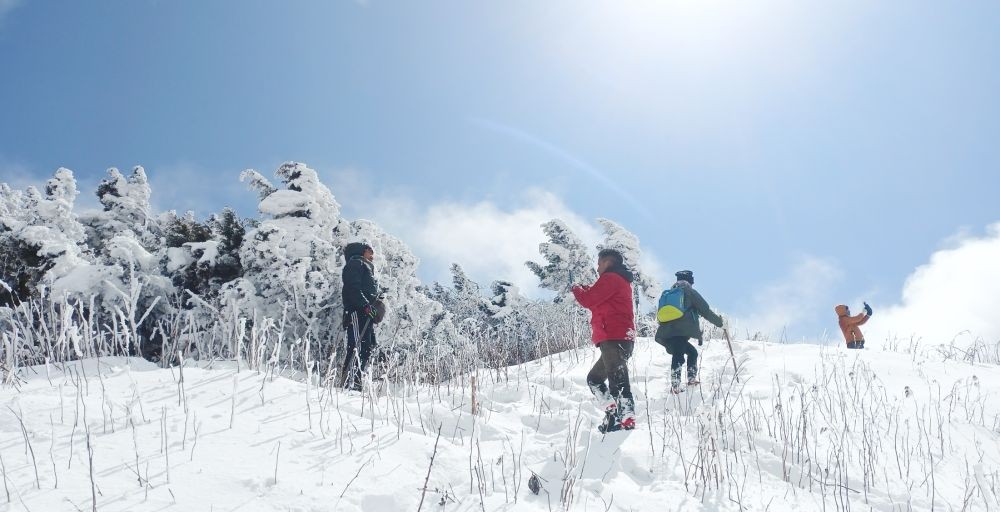People enjoy snowfall atop Mt Khelia Kingniu in Noklak district. (Photo Courtesy: Shingnya)

Morung Express News
Kohima | February 3
Nagaland welcomed its first snowfall in January, with visitors thronging to the spots, as images of dreamy snowy forests and snowcapped mountains were circulated in social mediums.
The first snowfall occurred on February 1 in various areas under Pfutsero such as Peak of Hope, Glory Peak, Pfutsero's Frozen Lake and Mt Kapamodzü, Zuwete, a resident of Pfutsero informed.
Zuwete and his friends were the first visitors at the Peak of Hope to witness the snowfall early in the morning on February 2. “It was very exciting as we haven't seen that type of snowfall. It has been heavier than the previous years,” he added.
The Southern Angami region under Kohima too witnessed a similar pattern of snowfall in the past few days. Yope Sale, a resident of Khuzama village mentioned that snowfall occurred in Khuzama on February 2. “It is not often that we get to experience snowfall here so it was magical and the uncertainty of seeing such an occurrence again made it more precious,” Sale conveyed.
In Noklak district, Mt Khelia Kingniu (name varies from range to range), received fresh snowfall in mid January. Shingnya and his group, who were the first trekkers to ever trek the mountain during the snowfall, mentioned that it was not an easy trek to explore the snowy mountain.
In the absence of proper routes, the group trekked with the help of indigenous knowledge and village hunters' routes.
“Every year snowfalls in this mountain, however according to our elders, the snowfall is heavier this year,” informed Shingnya.
Although a delight to many, the snowfall is cause of concern, according to experts.
Aftermaths of climate change?
“This is one of the aftermaths of climate change,” says Supongnukshi, IFS, Chief Conservator of Forest and State Nodal officer for Climate Change, Nagaland.
The IFS officer also observed that Nagaland is witnessing an extension of winter rains. While winter rains usually last a few days, it is prolonging for two weeks in the state.
Snowfall is an impact of extended winter rains, according to the official, as well as an after effect of climate change.
“In recent years, the State along with the rest of the world is witnessing climate extremes. This is an overall global phenomena,” maintained Supongnukshi.
As an after effect of climate change, the world will continue to experience extreme weather patterns, which will gravely impact the agricultural sector especially for a State like Nagaland. However, the expert rued that there is very little one can do at the local level except to 'Adapt'.
“It is a long process. The local environment is influenced by the larger global phenomenon. Unless big policies are implemented, this will go on for decades. Only at the policy level and development (State, National and International) it can be reverted. Adaption is what we can do at the moment,” stated Supongnukshi suggesting that deforestation and pollution needs to be tackled in the local level.
“There can be no denying that there are drastic changes in the weather pattern. These range from seasonal and non-seasonal erratic rainfall to no rains, to snowfall and hail storms. It will definitely impact our food and agricultural systems,” noted Amba Jamir, Policy Analyst and Development Advisor.
While the positive or negative impact is yet to be seen, he advocated for a smarter planning in agriculture and land use.
“Planning just for economic gains without keeping in mind environmental sustainability will be a huge mistake,” advised Jamir.






